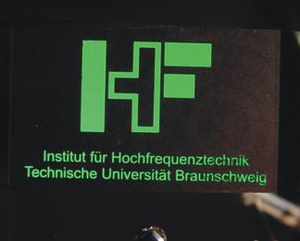October 2, 2007 feature
Simple OLEDs ready for quick manufacturing

With their attractively low energy consumption, Organic Light Emitting Diodes (OLEDs) are widely predicted to replace the LCDs now used in the large screens of laptops and TVs. Currently, OLEDs are commonly used in small portable devices such as cell phones, but adapting them to large screens will still require a few modifications.
Besides prolonging the OLEDs’ lifetime, one of the biggest challenges is designing a simplified fabrication process. Recently, researchers from Technische Universität Braunschweig in Germany have designed a highly simplified OLED consisting of only two organic layers, as opposed to the considerable number used in typical OLEDs. Besides its simplicity, the OLED’s efficiency (40 lm/W at 100 cd/m2) also surpasses those of other OLED devices of comparably simple design.
The key to the simplicity, the researchers explain, is the ability to directly inject electron holes into the device’s conductive layer. An OLED consists of an emissive layer and a conductive layer, which are flanked by a negative cathode and positive anode at either end, respectively. Under an applied voltage, a current of electrons flows from the cathode to the anode through both layers. During this flow, the cathode injects electrons to the adjacent emissive layer, while the anode injects electron holes to the adjacent conductive layer (which can also be thought of as taking electrons away).
By using a material called tungsten oxide as the anode, the researchers found that the process of injecting holes into the conductive layer of the OLED could be made more efficient. This in turn improved the current density, which meant that less voltage was required to operate the devices, resulting in about twice the power efficiency of an OLED without tungsten oxide.
“Usually, when one wants to inject holes into organic materials, there is the need for an anode material with a large work function to avoid large energy barriers for the carrier injection,” coauthor Thomas Riedl explained to PhysOrg.com. “This can be relaxed when a cascade of hole transport materials is used, which, however, leads to a significantly complicated OLED with many organic layers. Owing to the large work function of tungsten oxide there is no need for such a cascade, as the hole injection can be achieved directly into a wide bandgap hole transport layer adjacent to the emissive layer. This not only simplifies the device setup, but, due to the efficient hole injection, allows for low operating voltages, a better balancing of electrons and holes. This is beneficial for both the photometric and power efficiency of the OLEDs.”
By determining that the hole injection properties in simplified OLEDs could be improved with tungsten oxide, the researchers hope to have enabled a method for easier and fail-safe manufacturing processes. However, as Riedl explained, there are some other challenges that OLEDs must overcome before being widely used in large displays. These include finding a method to pattern the red, green and blue pixels for larger displays without compromising the quality.
“At the end of the day, the customer doesn't care about the technology used in the laptop display or the TV as long as it is affordable and delivers a high quality,” Riedl said. “LCDs have matured considerably and many of their former drawbacks have been solved. The LCD technology moves on with an enormous speed, and OLEDs still have to catch up in order to become a real alternative in the consumer TV or laptop market. However, OLEDs emitting white light are also very attractive for ambient lighting with low energy consumption. This application will likewise benefit from the concept of simplified OLEDs.”
Besides their low energy consumption, OLEDs offer other advantages, such as their ultra-thin width, flexibility, and transparency, which may open doors for an assortment of new technologies.
Citation: Meyer, J., Hamwi, S., Bülow, T., Johannes, H.-H., Riedl, T., and Kowalsky, W. “Highly efficient simplified organic light emitting diodes.” Applied Physics Letters 91, 113506 (2007).
Copyright 2007 PhysOrg.com.
All rights reserved. This material may not be published, broadcast, rewritten or redistributed in whole or part without the express written permission of PhysOrg.com.




















